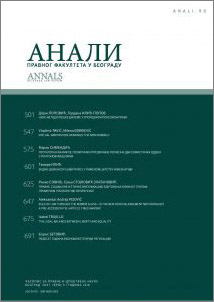
Forvm Romanvm: Prof. Dr Miloš Stanković Gave a Lecture about Assise sur la ligèce
The Forvm season ended on Friday, the 20th of May, 2022, with a lecture by Prof. Dr Miloš Stanković titled „Assise sur la ligèce: the great charter of liberties of the Kingdom of Jerusalem”. The professor briefly led us through the history of the Crusades and the emergence of crusader kingdoms, comparing their culture to the Hellenistic states of the ancient world. He pointed out that the position of Godfrey of Bouillon was not far off from the position held by the kings of Western Europe, but that he did, however, pledge fealty to Daimbert, the Latin Patriarch of Jerusalem – and, according to legend, he was also instrumental in establishing legal order in the Latin East, by bringing together common law tenets that were shared by all. The Assise sur la ligèce itself was created later, probably in 1166, in the second wave of codification, and it was applied in at least three cases throughout the existence of the Kingdom of Jerusalem. The proclamation of the charter was prompted by a case in which king Amaury I intervened when one of his vassals was deprived of his fief by his senior; the king demanded that the senior return the fief he confiscated, and to indemnify the vassal. The Assise predicted for every vassal of the Kingdom of Jerusalem to be obliged to pledge hommagium and an oath of fealty directly to the king of Jerusalem. Therefore even the lowest of the vassals were directly bound to the king and had access to the High Court. The Assise was binding for the king himself as well: every vassal had the right to demand a trial before the High Court (by himself or with other feudal lords), and if he was denied that right, he was entitled to take his fief back by force; as an ultima ratio, all vassals of the Kingdom of Jerusalem could collectively withdraw from serving the king, i.e. they could break the contract if the king himself did not respect it, which is exactly what happened in the case of Ralph of Tiberias. Prof. Stanković concluded that this system brought together the best features of the system of vassalage to the crown and the system of hierarchical ladders. He also spoke of other cases in which this Assise was applied, pointing out many parallels to English law, although the path of the reception cannot be confirmed as yet. An interesting discussion followed the lecture.




